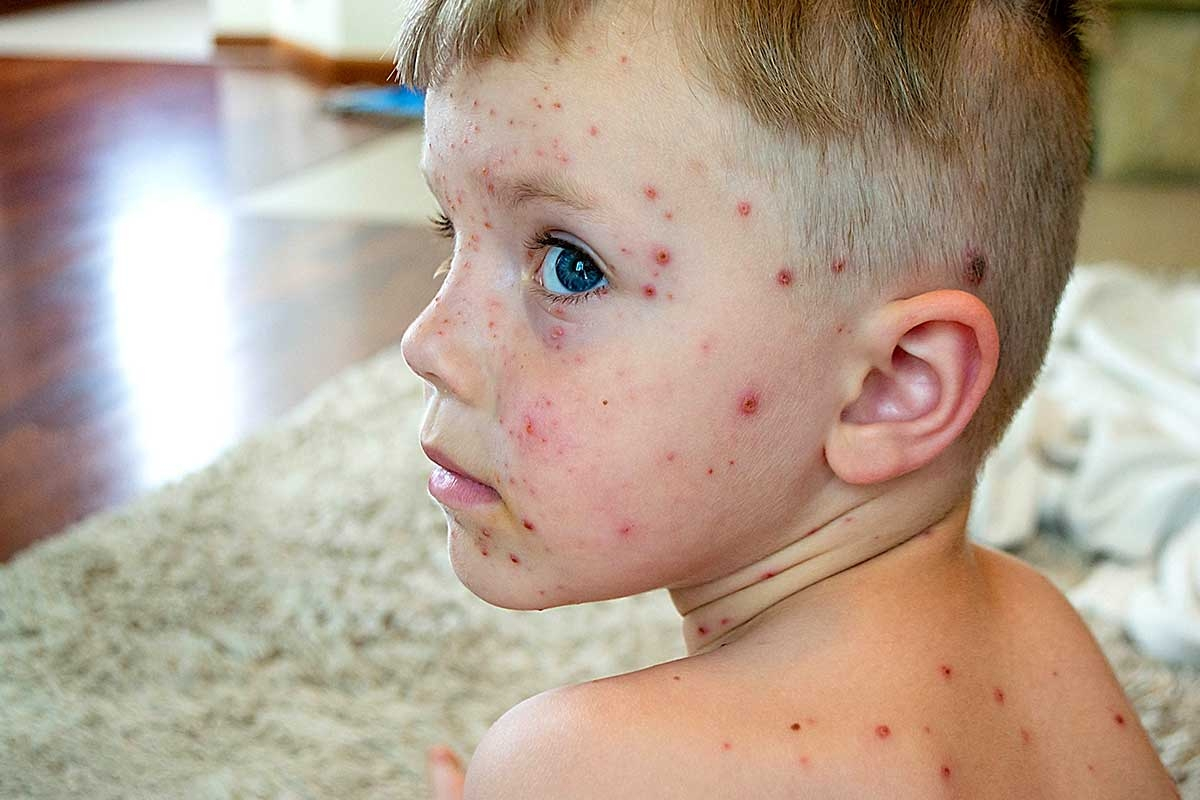Chickenpox, Rubella, and Measles: Symptoms, Prevention, and Treatments
Chickenpox, rubella, and measles are viral diseases that have significant implications for public health. Despite being preventable, these infections continue to impact populations due to vaccine hesitancy and lack of awareness. Understanding their differences, symptoms, and preventive measures is crucial to safeguarding individual and community health.
What Are Chickenpox, Rubella, and Measles?
These three diseases are distinct in their causative viruses and clinical presentations, but they share similar transmission routes, making them highly contagious.
Chickenpox (Varicella)
Chickenpox is caused by the Varicella-zoster virus. This infection primarily affects children and is characterized by itchy, fluid-filled blisters. While generally mild in healthy individuals, complications can occur, particularly in adults or immunocompromised patients.
Rubella
Also known as German measles, rubella is caused by the rubella virus. It typically results in mild symptoms but can have severe consequences for pregnant women, as it can lead to congenital rubella syndrome, causing birth defects.
Measles
Measles is caused by the measles virus and is a more severe infection, leading to complications such as pneumonia and encephalitis. Measles outbreaks can escalate quickly due to its high contagion level.
Transmission
All three diseases spread through:
- Direct contact: Touching infected blisters or secretions.
- Respiratory droplets: Sneezing and coughing. These viruses are contagious even before symptoms fully develop, making early detection and isolation critical.
Symptoms
Each disease has hallmark symptoms that help differentiate them, though initial signs like fever and malaise may overlap.
Chickenpox
- Early signs: Mild fever, fatigue, and headache.
- Characteristic rash: Red, itchy blisters filled with fluid. These appear on the face, chest, and back before spreading.
- Other symptoms: Intense itching and discomfort, which may interfere with sleep and daily activities.
Rubella
- Rash: Starts on the face and spreads downward, accompanied by a low-grade fever.
- Swollen lymph nodes: Particularly noticeable behind the ears.
- Additional symptoms: Joint pain is more common in adults than children.
Measles
- Initial symptoms: High fever, cough, runny nose, and conjunctivitis (pink eye).
- Koplik spots: Tiny white spots inside the mouth, a diagnostic sign.
- Rash: Starts on the face and spreads to the rest of the body, often coalescing into larger red patches.
Diagnosis
Proper diagnosis ensures appropriate management and helps prevent outbreaks.
Clinical History and Symptoms
Doctors rely on recognizing distinctive features such as chickenpox blisters, rubella's mild rash, and the Koplik spots unique to measles.
Laboratory Tests
- Serological tests: Confirm the presence of specific antibodies for rubella and measles.
- Skin examinations: Visual confirmation of rash patterns for chickenpox.
Accurate diagnosis is vital in distinguishing these infections from other viral rashes.
Prevention
Vaccination remains the cornerstone of preventing these diseases, along with good hygiene practices.
Vaccination
- MMR vaccine: Protects against measles, mumps, and rubella, administered in two doses.
- Varicella vaccine: Prevents chickenpox, often included in routine childhood immunizations.
- Herd immunity: Ensures that even unvaccinated individuals are protected by reducing the spread within communities.
Hygiene and Isolation
- Avoid close contact with infected individuals.
- Regularly wash hands and disinfect shared surfaces.
- Use masks during outbreaks to limit respiratory transmission.
Special Precautions for Pregnant Women
Rubella vaccination is vital before conception to avoid congenital rubella syndrome. Pregnant women should avoid exposure to anyone with symptoms of rubella or measles.
Treatments
Treatment focuses on relieving symptoms and preventing complications, as these infections are viral and do not respond to antibiotics.
Chickenpox
- Symptomatic relief: Use antihistamines for itching and acetaminophen for fever. Avoid aspirin, as it may lead to Reye’s syndrome.
- Topical care: Calamine lotion and oatmeal baths soothe the skin.
- Antivirals: Acyclovir is prescribed for severe cases or high-risk groups.
Rubella
- Rest and hydration: Rubella symptoms are usually mild and resolve without specific treatment.
- Monitoring during pregnancy: Pregnant women exposed to rubella require immediate medical attention to assess risks.
Measles
- Supportive care: Ensure adequate hydration and use fever reducers.
- Vitamin A supplementation: Reduces the severity and risk of complications.
- Hospitalization: Severe cases with complications like pneumonia or encephalitis may require intensive care.
Potential Complications
Complications vary by disease and are more likely to affect vulnerable populations.
Chickenpox
- Secondary bacterial infections: Scratching blisters can introduce bacteria.
- Herpes-zoster (shingles): Reactivation of the virus in adulthood causes painful nerve involvement.
Rubella
- Congenital rubella syndrome: Causes birth defects like heart malformations, deafness, and cataracts in newborns.
- Arthritis: Temporary joint pain in adults.
Measles
- Pneumonia: A leading cause of death in measles patients.
- Encephalitis: A rare but severe inflammation of the brain.
- Otitis media: Ear infections are common in children with measles.
The Importance of Immunization
Vaccination campaigns have drastically reduced the prevalence of these diseases worldwide, yet recent outbreaks highlight the need for vigilance.
- Eradication efforts: Measles was declared eliminated in many regions but has resurfaced due to vaccine hesitancy.
- Community protection: High vaccination rates ensure herd immunity, safeguarding those who cannot be vaccinated due to medical conditions.
Promoting adherence to immunization schedules is key to preventing future outbreaks.
Tips for Parents and Caregivers
Caring for children with these infections requires attention to both comfort and prevention.
Managing Symptoms
- Create a calm environment with adequate hydration and nutritious meals.
- Use lukewarm baths and soft clothing to minimize discomfort from rashes.
Preventing Spread
- Isolate infected individuals until fully recovered.
- Inform schools or daycare centers to alert other parents and caregivers.
Awareness and prompt medical consultation are essential to effective management.
Conclusion
Chickenpox, rubella, and measles are preventable diseases with significant health impacts when left unaddressed. Early recognition, vaccination, and supportive care can greatly reduce complications and transmission.
Book an appointment with the pediatricians and infectious disease specialists at Clinic Consultation to ensure your family’s immunizations are up-to-date and receive expert care for infectious diseases.
